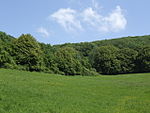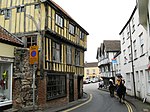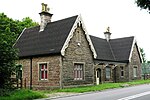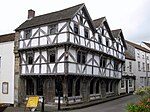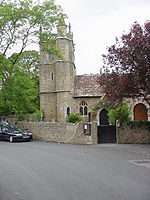Callow Rock quarry
Cheddar, SomersetQuarries in the Mendip HillsSomerset geography stubsUse British English from February 2023

Callow Rock quarry is a limestone quarry located in Shipham Gorge between Cheddar and Shipham on the Mendip Hills, Somerset, England. The quarry has been operating since the early 20th century primarily as a Lime quarry producing a quality product of high purity for the chemical industry. It is now operated by Bardon Aggregates. In 1922 a plant was built to make hydrated lime. It also now contains a large concrete production plant. Local residents driving past on Shipham Hill always know to be wary of treacherous driving conditions caused by mud on the road from quarry vehicle wheels.
Excerpt from the Wikipedia article Callow Rock quarry (License: CC BY-SA 3.0, Authors, Images).Callow Rock quarry
Callow Drove, Sedgemoor Shipham
Geographical coordinates (GPS) Address Nearby Places Show on map
Geographical coordinates (GPS)
| Latitude | Longitude |
|---|---|
| N 51.298536 ° | E -2.799728 ° |
Address
Callow Drove
Callow Drove
BS25 1RQ Sedgemoor, Shipham
England, United Kingdom
Open on Google Maps
